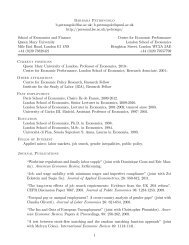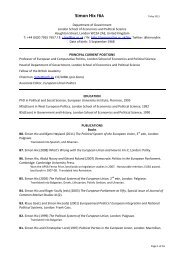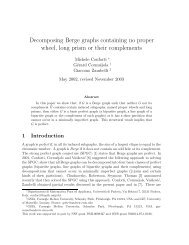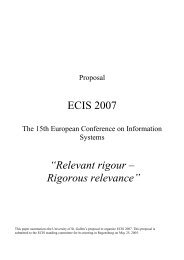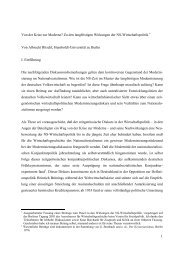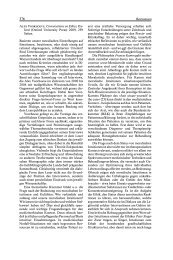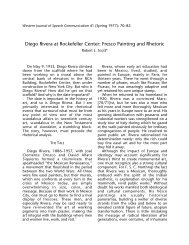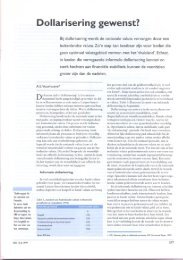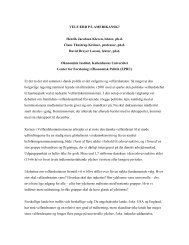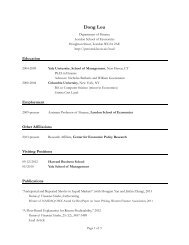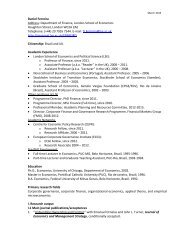View PDF - LSE - London School of Economics and Political Science
View PDF - LSE - London School of Economics and Political Science
View PDF - LSE - London School of Economics and Political Science
Create successful ePaper yourself
Turn your PDF publications into a flip-book with our unique Google optimized e-Paper software.
the quotidian support networks <strong>of</strong> job, family, community, <strong>and</strong> urban service-the lifeworlds-<strong>of</strong><br />
city residents” (62). However, these discussions do not take into account the<br />
hukou factor or residents’ varying degree <strong>of</strong> entitlements.<br />
St<strong>and</strong>ing in the way <strong>of</strong> development projects, nail-houses are <strong>of</strong>ten portrayed negatively<br />
by government <strong>of</strong>ficials who may claim them to be <strong>of</strong> nuisance or trouble-makers. As<br />
Hsing asserts, protesters are “presented as uncooperative <strong>and</strong> opportunistic negotiators<br />
for higher compensation <strong>and</strong> are accused <strong>of</strong> sacrificing the public interests for personal<br />
gain, <strong>and</strong> even <strong>of</strong> causing housing price hikes” (2010:78). Under these circumstances,<br />
how do local residents with various conditions (eg housing tenure, hukou, migration)<br />
view nail-households? Do they also regard nail-house activities as ad hoc events or<br />
something that emerges due to structural causes? In particular, what are the views<br />
among local residents towards migrants claiming a stake in the projects that involve the<br />
demolition <strong>of</strong> their homes? These questions form the basis <strong>of</strong> the analysis to be drawn<br />
in the following section, reporting the findings from my field research conducted in<br />
Guangzhou over the period between 2009 <strong>and</strong> 2011. The empirical findings in the<br />
following section are based on my site observation, a questionnaire survey <strong>and</strong><br />
qualitative semi-structured interviews with local residents.<br />
‘Local epistemology’ <strong>of</strong> nail-houses<br />
Resistance <strong>and</strong> protests in contemporary China increasingly take a variety <strong>of</strong> forms,<br />
ranging from individual or collective lawsuits to non-legal modes such as petitions <strong>and</strong><br />
violent confrontations (Cai 2007; O’Brien <strong>and</strong> Li 2005). There would also be an array<br />
<strong>of</strong> “everyday resistance” that remain “invisible” (Perry <strong>and</strong> Selden 2003:2). For<br />
instance, when people resist eviction <strong>and</strong> refuse to vacate, they may simultaneously<br />
organise petitions to approach sympathetic high-ranking <strong>of</strong>ficials <strong>and</strong> seek their<br />
intervention or moral support. They may also approach media that might feel<br />
compassionate about their cases.<br />
If nail-house activities are acknowledged as one form <strong>of</strong> radical protest, it will also be<br />
meaningful to scrutinise nail-houses in order to gauge the views <strong>of</strong> permanent local<br />
residents <strong>and</strong> migrants on property rights activism <strong>and</strong> rights awareness. Two main<br />
reasons can be put forward: first, while riots or collective protests are much less<br />
frequent, nail-house activities have recently become one <strong>of</strong> the most visible forms <strong>of</strong><br />
exercising property rights activism. Secondly, unlike other modes <strong>of</strong> resistance such as<br />
Shin, H.B. (2013) Antipode DOI: 10.1111/anti.12010 | Page 9 <strong>of</strong> 29



